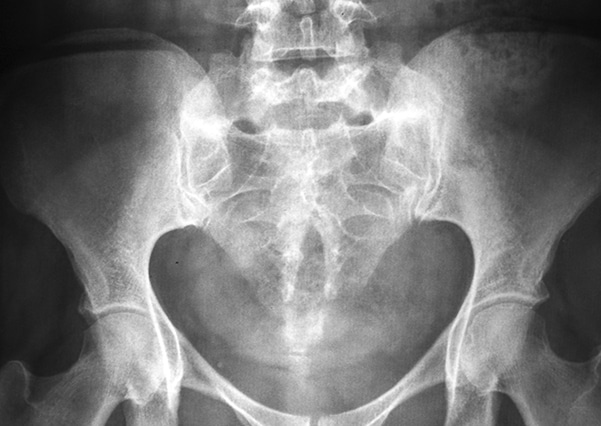Back
Pelvic Pain and Dysfunction in Transmasculine Populations
By Dr. Zarina Vitebsky, DPT, MSPT, PRPC, TPS, LPF, DN on 9/20/2023

A holistic approach is required throughout the phases of transition. One must consider the musculoskeletal, gastrointestinal, neuromuscular, urological, gynecological, and psychological aspects to the plan of care. As for pelvic pain, physical therapists hone in on the impairments and functional limitations before, during, and after operative interventions. Pelvic physical therapy can also help in managing chronic pelvic pain with and without a gender affirming surgery. In this article, we can dive into how rehab can facilitate the transition for transmasculine populations whether surgery is on the table or not.
The rehab for pelvic pain starts with a conversation. A thorough history is required to exam origin of pain, onset of pain, history of trauma (mental, physical, sexual), and the overall patient’s perspective/ outlook on pain. It is important that the physical therapist takes the time to understand the effect of pain on one’s life- how it influences sleep, relationships, work, and social interactions. Taking the medical history would include discussing past surgeries, hormone therapies, and menstrual cycle activity. 15% of >1,500 self identified LGBTQ+ respondents endorsed postponing / avoiding medical care due to fear of discrimination. Patient-provider interactions may be triggering, therefore it is important for the clinician to take a trauma informed approach when conducting the exam. At Pelvic Health Physical Therapy, we are constantly updating and educating all staff with continued education training and LGBTQIA+ approved training. Every patient's privacy and safety is our top priority.
Non-surgical pelvic pain considerations:
Physical exams can be a comprehensive orthopedic musculoskeletal exam. Important pelvic considerations for transmen are scar tissue adhesions, chest/abdominal wall rigidity from binding, and vaginal atrophy/ dryness/ pain from hormone therapy. Testosterone induced pelvic pain can come in the form of:
Dyspareunia - pain with intercourse, penetration
Vaginitis - inflammation of the vaginal opening/ wall (in the form of itchiness, burning, discharge)
Cervicitis-inflammation of the cervix (opening of the uterus)
Pelvic physical therapy utilizes manual therapies to address soft tissue restrictions, pelvic floor tightness, hypersensitivity, and more. Understanding breathing mechanics, activity modifications, relaxation techniques, positional relief, and stretches are conservative ways to address chronic pelvic pain.
Pre-operative rehabilitation:
Preoperative pelvic rehab for bottom surgery would include promoting the length and function of the affected tissues to optimize surgical outcomes.
Hysterectomy with or without oophorectomy
Metoidioplasty (clitoral enlargement with or without urethral lengthening)
Phalloplasty (acquiring a skin flap with nerve and blood supply as well as a skin graft to cover where the flap was taken from another area on the patient’s body, in order to have enough tissue to create the neophallus)
Stretching, strengthening, and coordination of postural and core muscles is important to decrease interregional tightness.
Gender affirming surgery (post-op) considerations with Pelvic Floor Physical Therapy:
The physical exam for post operative bottom surgeries would evaluate the pelvic floor musculature, urethra, and pelvic neural and fascial structures are often involved during surgery. Dysfunctions can include difficulty initiating and sustaining urinary stream, urgency/ frequency of bowels/ bladder, painful or infrequent bowel movements, hypersensitivity to sitting/ clothing/ touch, and more.
Phalloplasty procedures require tissue from another part of the body, and the therapist can help mobilize the donor/ recipient site to promote adequate tissue length and decrease scar tissue adhesions. Manual therapy can improve range of motion and optimize discomfort.
The physical exam for post operative top surgery (removal of breast tissue) involves assessment of the spine, chest, neck, abdomen, shoulder, and ribs. Restrictions in these areas can affect breathing, posture, and upper body range of motion, such as reaching overhead. Scar mobility along a healed incision site can help reduce the appearance and discomfort.
If you’re experiencing pelvic pain or dysfunction and are medically clear to begin physical therapy, please reach out to us here at the Pelvic Health Center in Madison, NJ to set up an evaluation & assessment! Feel free to call us 908-443-9880 or email us at contact@pelvichealthnj.com.
Read More:
How Chronic Pelvic Congestion in Men Contributes to Prostatitis By Shannon Strauch, PTA, STMT-1 on 12/11/2024 How lymphatic issues can cause symptoms of prostatitis Prostatitis and Tight Pelvic Floor Muscles: A Comprehensive Guide By Shannon Strauch, PTA, STMT-1 on 12/10/2024 How a tight pelvic floor can be the reason for prostatitis symptoms
Are you ready to live pain free?
Request An Appointment